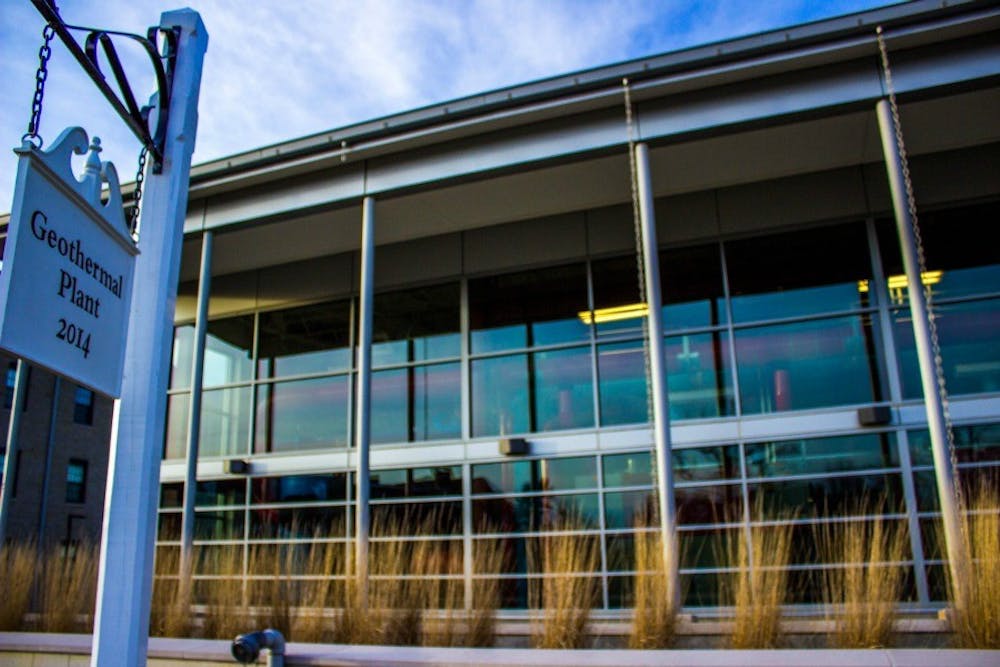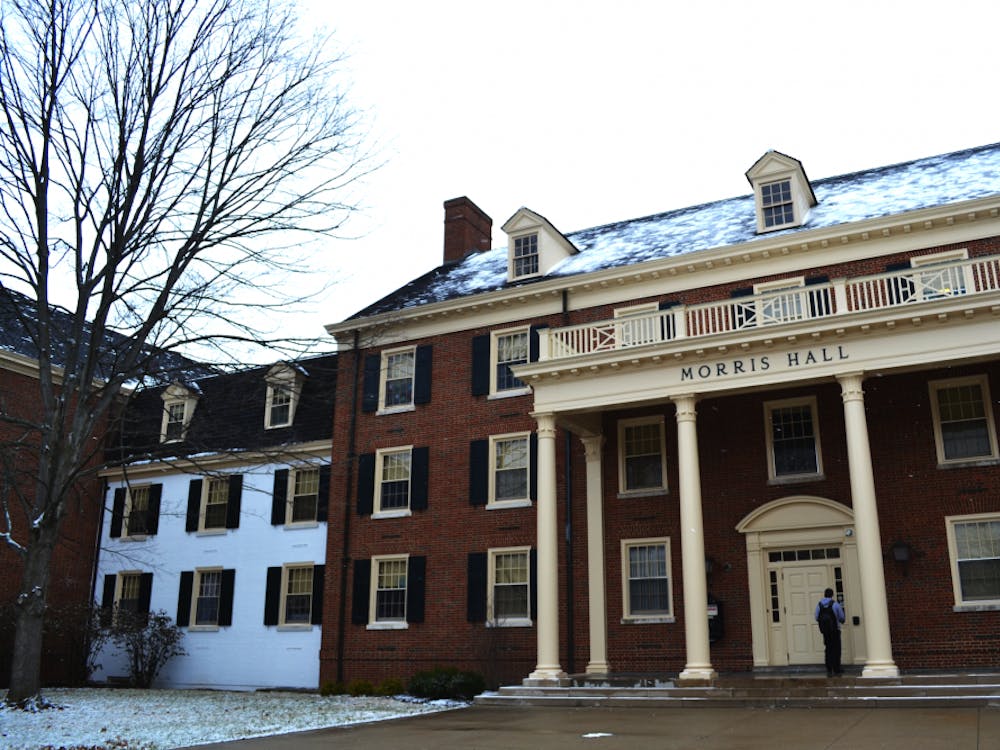In 2008, two Miami University students approached former University President David Hodge to ask why the university did not have a sustainability plan. His response: “Why not head up a committee to write one?”
The two students took on the challenge.
In the following years, Miami University's sustainability initiatives developed rapidly. Professor of geography and former Sustainability Coordinator David Prytherch said he watched this effort unfold firsthand.
“It was a pretty big effort that drew in a lot of people,” Prytherch said. “We then, all together, wrote the first kind of sustainability plan for Miami.”
From grassroots student efforts and faculty volunteer work to solutions achieving the coveted cost-effective and green combination, the story of sustainability at Miami can be peeled back to reveal a history demonstrating the tedious – and sometimes unseen – effort that creates action.
The roots of Miami’s sustainability
Miami’s sustainability took off in 2009. The Farmer School of Business became the first LEED-certified building on campus. Many faculty members were beginning to come together and dedicate their time to the movement, as well. Prytherch began serving as the first sustainability coordinator the same year – a role he would occupy until 2012.
The Sustainability Committee, a volunteer group of faculty members, also came together around this time, and the first set of sustainability commitments and goals were drafted in 2010. Suzanne Zazycki, former associate director of the Institute for the Environment and Sustainability (IES), who co-chaired the committee for six years, said the group worked toward gathering and presenting fact sheets regarding sustainability to the university.
“Since it started back in 2009, a lot of us on the sustainability committee have just been steadily plowing through and working hard, doing our annual reports – just working, not grassroots level, but maybe kind of unseen,” said Sustainability Communications Manager Susan Meikle.
Meikle, who has been serving on the committee since 2011, said the group’s efforts have laid the foundations for sustainability to move quickly at Miami.
Around this time, Miami also began shifting from steam to geothermal power. The first two buildings to transition were dorms Elliott and Stoddard Halls in 2010. Miami’s current director of sustainability, Olivia Herron, described the project as forward-thinking.
Enjoy what you're reading?
Signup for our newsletter
“Miami was definitely an early adopter of geothermal, especially within higher education,” Herron said.
She also described the project as cost-effective. The university knew its old steam system was outdated, with the newest boiler being installed in 1979. Not only had the first geothermal projects been a success – they were a success that could save money while remaining environmentally friendly.
The Utility Master Plan, which lays the groundwork for geothermal transition, was later created in 2012 and updated in 2017 with plans to move all campus buildings off steam. With the help of this plan, Miami has cut over half of its utility-based carbon emissions since 2008.
Although Meikle said cost-effectiveness played a significant role in garnering administration support for sustainability, this incentive did not act alone.
“I think that was a big factor to get upper administration and the board of trustees on board,” she said. “But also, another thing was that students had started to become more vocal, and that really catches the ear of the president and the board of trustees.”
Student sustainability efforts
Before serving as associate director of IES, Zazycki said she first experienced environmentalism as an undergraduate at Miami.
She was part of the recycling coalition – a student and faculty advocacy group that aimed to help the university add and expand recycling programs. Zazycki said the movement was a product of a larger realization taking place in the late 1980s, that solid waste management had gotten out of control. She recalls holding public meetings on campus to encourage conversation and pulling cans out of trash to demonstrate the need for recycling.
“I remember there being a lot of energy and excitement,” Zazycki said.
As a faculty member, Zazycki saw a similar passionate environmental movement play out, this time from an outcry about climate change. She said that sometimes in movements such as these, creating noise can encourage better communication from administrators.
“Sometimes [being vocal] gets the administration to start sharing what they have been doing, what they have been talking about,” she said.
Meikle also remembers this action, where one Friday in September of 2019, students gathered in front of Lewis Place to advocate for climate action, inspired by Greta Thunberg’s Fridays for Future movement. The Miami news office stopped to talk to students on the scene, and a meeting between two student leaders and President Gregory Crawford was organized.
Meikle said that although the university was discussing climate action and carbon neutrality, students were unaware of this.
“It just kind of was marching side by side,” she said. “Just each didn’t know what the other was doing.”
Meikle said that post-COVID-19, sustainability communication increased. Organizing their online pages with updates on sustainability efforts was one way of doing this.
Carbon neutrality movements
In 2019, Herron helped write a small section of a university report that explored paths toward carbon neutrality, titled “A Commitment to Lead.” Today, she gets to help implement it.
Herron said the report’s goal was to determine whether the university should create its own climate action plan, or abide by an outside national standard. Report writers recommended the latter, and in September 2020, Crawford signed the President’s Climate Leadership Commitments.
The program, under the third-party standards of Second Nature, committed the university to carbon neutrality and paved the way for the Climate Action Plan, submitted in May 2024. This plan sets 2040 as the target date for zero net emissions and lays out the goals and actions to achieve this target.
What’s next for Miami sustainability?
“It’s a very exciting time,” Herron said.
The Utility Master Plan, laid out over ten years ago, is drawing near its end with an estimate of 2028. The university looks ahead to implementing solar energy to pair with geothermal, and the Climate Action Plan marches forward.
Annabel Dechant, a master’s student of political science who is currently working as a student assistant in the office of sustainability, said student involvement has been encouraging, and hopes it will continue to increase.
“Sustainability is strongest when we have widespread team effort,” she said.
Meikle said she is also optimistic, and the Climate Action Plan’s implementation has gone smoothly so far, with surprisingly little pushback. As for the future, she is waiting to see what the climate surrounding sustainability will bring.
“It would be very disappointing to see people start shying away from it just because of the politics,” she said. “Because it’s more important than ever.”




